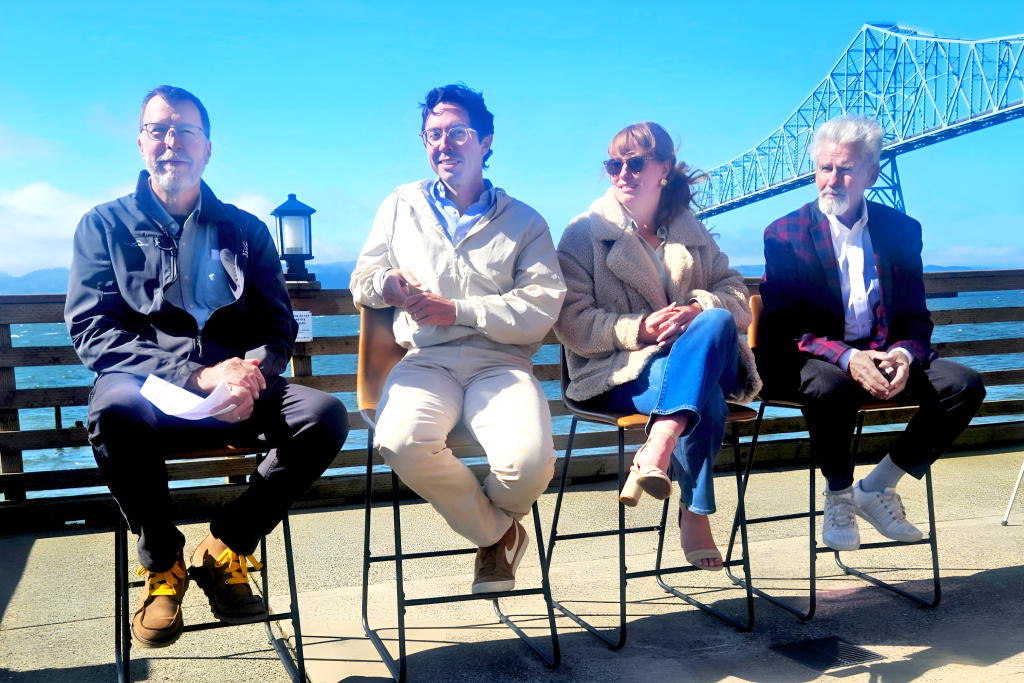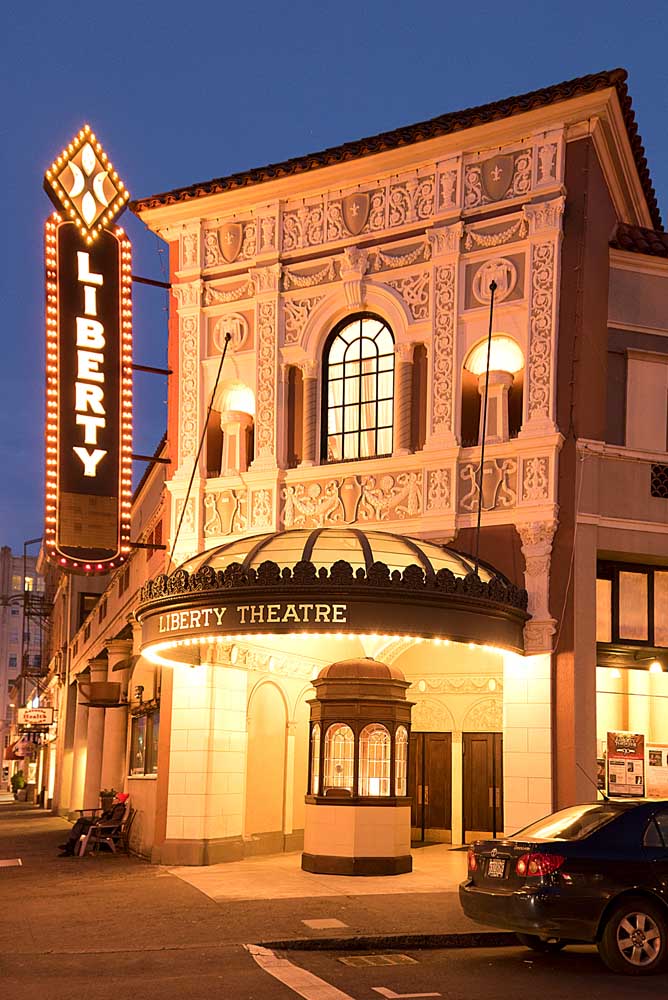Goonies house restoration goes for the heart
Published 6:00 am Saturday, June 28, 2025

- Pictured, from left: Members of the "Discussing the Design" panel are David Reid, executive director of the Astoria-Warrenton Area Chamber of Commerce; James Pearse Connelly, production designer; Stephanie Hines, set decorator; and Jack Johnson, the original "The Goonies" film set decorator. (Elleda Wilson/The Astorian)
The “Discussing the Design” panel, held June 6 on the Cannery Pier Hotel & Spa deck, featured James Pearse Connelly, production designer, Stephanie Hines, set decorator, and Jack Johnson, the original “The Goonies” film set illustrator, talking about the restoration of the Goonies house to its “on-screen glory.”
The panel was ably led by David Reid, executive director of the Astoria-Warrenton Area Chamber of Commerce, and started with an introduction by Linh DePledge, director of Brand & Communications at the hotel.
First up was Jack Johnson, who was asked about what were his “guiding ideas” to draw the amazing illustrations of what would become the sets of “The Goonies.”
Trending
“Well, Michael Riva was the responsible party,” Johnson replied. Riva was the movie’s production designer. “I would interpolate from what a location guy sent me of pictures of the house and typically, they never send the right angle that you can work with,” Johnson explained.
“So now I have to interpret, I have to shift it. I have to be able to draw from an angle that I can’t see, which was a big benefit for me in the business, because I could do that.
“So one of the best stories, I think, was that the production designer wanted to do a real ship, a practical ship. The producers didn’t want to spend the money. So what we did is, we built, designed and sketched three sets that became part of the ship.”
As it turned out, the cost of creating the rock formations around the ship, and the walls of rock, and all the scaffolding underneath, was more than the ship cost. Johnson also designed the elaborate bone organ (15 different versions), and Wild Willy’s chamber.
“But this film was so much fun,” Johnson said. “And as I’ve said a hundred thousand times, nobody, including (executive producer Steven) Spielberg, had any idea it would come to this. It’s really, truly amazing. And obviously, that’s why you’re all here.”
Next up was Stephanie Hines, who was the set decorator for the Goonie House renovation. “I was just, ‘yeah, I’ve got to do that,’” she said when approached for the job. “I think rewatching the movie after getting offered the job with James, you definitely start to notice how many layers there are in the house, and in all the set decorations and all the knickknacks and product placement and everything,” Hines said. “And it just kind of wowed me a bit. I don’t know how I’m going to find all that.”
Trending
Connelly agreed. “And to even elaborate more, when we started the project, I went up to the house and just sort of took a survey of it,” he said. “We knew the goal. We knew how it was supposed to end. We just had to copy the movie. And I went back to the hotel and I thought, I can’t wait until Stephanie gets on board. There’s so much to do. It’s endless there.”
Reid asked Hines if there was any specific element or thing that they would have to have to make the job complete.
“We took a screenshot of every image, of every scene,” Hines said, “and really honed in on all the … little details that you can’t see in the movie, that are just in shadows in the movie.”
The detailed screenshots were lugged around in a huge 18-by-24-inch book, said Connelly. “It’s just insane how much stuff is in that house. … And all the details, and really, the challenge is to get it as photo accurate as possible.” He said he also worked closely with the original film crew members.
Hines scoured Facebook Marketplace and eBay for items for the house, and several donations came from Goonies fans. Those items that couldn’t be replaced had to be made.
One thing Hines simply couldn’t find was an old sign that was in the Goonie house attic. As it turned out, she finally found a man in New Jersey who was selling one for $100.
He wanted to know what she wanted it for, and when she explained, “the guy was … you could hear in his voice, he was almost in tears,” Hines recalled.
“’That was my favorite movie as a child,’” he told Hines. “’And this was in my grandpa’s house, and I didn’t know what to do with it. So I just figured I’d sell it … I’m so happy that this is what this is going to.’
“It’s little stories like that,” Hines said, “that really make the project unique and worth it.”
Connelly then talked about how he got involved. “Two years ago, I got a call from Behman (Zakeri, Goonie house owner) to float the idea by me,” he said, adding that he was immediately on board. “You’re not going to call anybody else, right?” he’d asked Zakeri.
Zakeri chose Connelly because he didn’t want an interior decorator, he wanted a production designer, and Connelly is known as one of the best, and well-known in the business. “And so we connected immediately,” Connelly recalled. “I know the movie. I’m a fan.”
Connelly “pre-visualized” the house in 3-D. Then he did a paper model, and then a 3-D model. “We were able to quickly look at all the angles, and determine what areas weren’t on camera from the screen grabs. So we had to embellish.
“… And so, after a certain point of just kind of letting go of the wheel and just letting the design and construction happen, we had fun with the house. … We put our own Easter eggs in throughout the interior.”
Reid asked if Connelly could have left a hidden note somewhere in the house, what would it say? “It would say ‘be fearless and make it cohesive.’ Those are the things that I learned from redoing the Goonies House … and, that actually, you cannot kill a production designer.”
Reid’s final question to the panel was: “What do you want people to feel when they walk into the Goonies house?”
Connelly: “Oh, I want them to experience it alone. And I want them to bring their phones in for some of the iconic shots … I do think that it’s such a personal experience. And it’s like what you said, bringing back a lot of childhood memories. I think it’s really important to have. And then you have to talk.”
Hines: “I just want them to feel like they’re like a character in the movie and they’re walking through those scenes as if they’re, you know, as they would have in the film.”
Johnson: “What I would like to see is some of these people, relating to their own childhood, stand there and cry.”
Editor’s note: The Goonies House at 368 38th St. is a private residence but tourists are welcome to view the exterior only for now, being mindful of the neighbors and parking.









